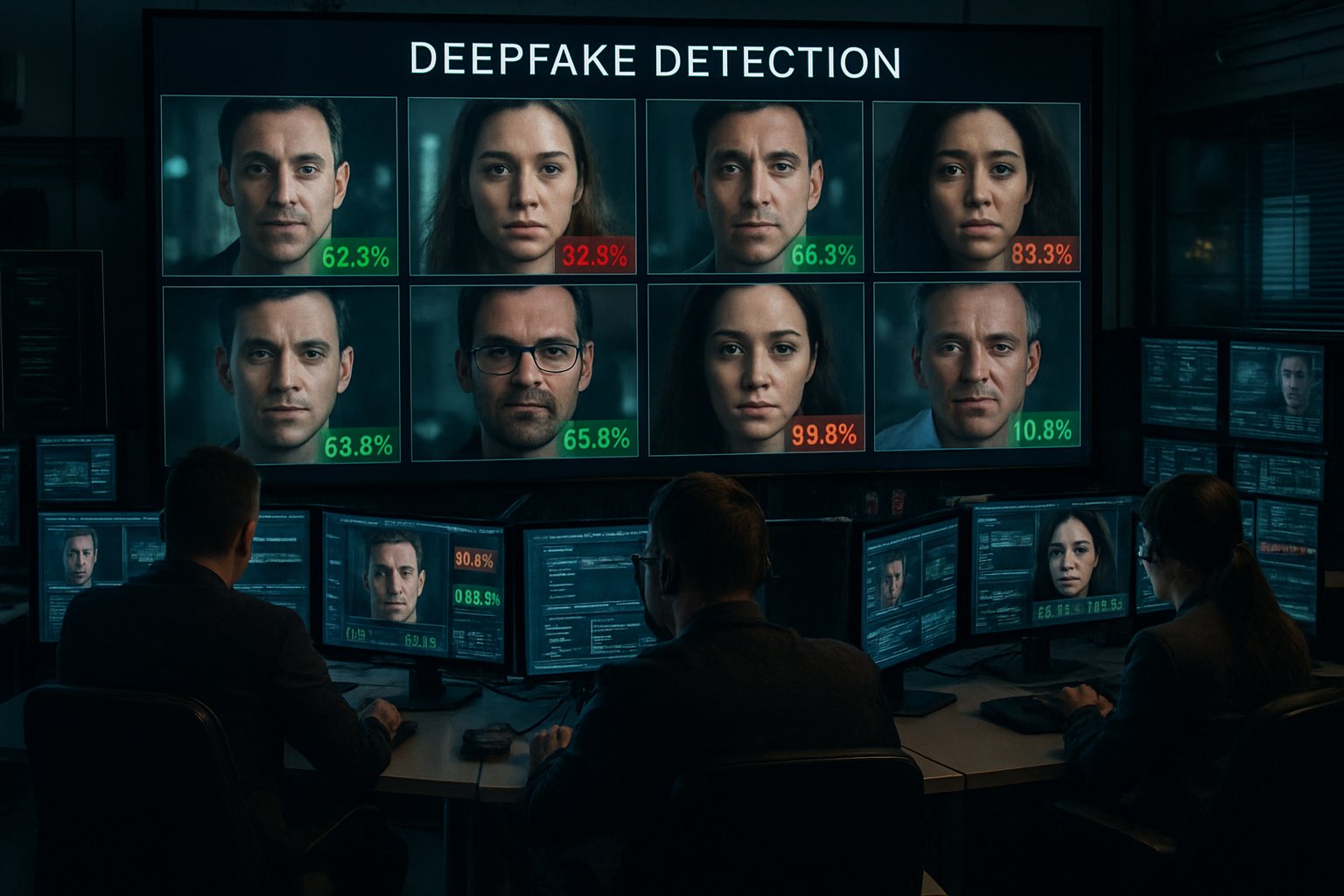
AI CERTS
4 hours ago
Deepfake Detection Claims Face Real-World Accuracy Test
Moreover, we highlight certification pathways that bolster practitioner expertise. Readers will gain pragmatic guidance to evaluate claims, deploy responsibly, and anticipate adversarial shifts.
Benchmark Hype Versus Reality
Marketing materials frequently headline near perfect numbers. Several recent papers and vendor sites quote 99.7% Deepfake Detection accuracy on familiar datasets. Furthermore, benchmarks like FaceForensics++ reward models that memorize dataset quirks rather than semantic truth. In contrast, Deepfake Detection models rarely generalize across datasets, as Meta’s DFDC black-box test showed only 65% accuracy. Researchers therefore, stress metric context. They urge disclosure of dataset splits, compression settings, and class balance to uphold Media Integrity.

These observations reveal a sizable credibility gap. Consequently, real-world evaluations deserve closer scrutiny before procurement.
Real-World Accuracy Challenges
Once detectors leave pristine benchmarks, performance erodes quickly. Camera captures, resizing, or social media compression can halve accuracy scores. Additionally, CSIRO and Sungkyunkwan tests found leading tools falling to 69% on realistic videos. Audio models suffer similar drops when voices shift dialects or microphones change. Therefore, teams must plan continual retraining and monitoring. Robust pipelines mix Deepfake Detection with provenance tags, manual review, and policy escalation.
Field data proves lab triumphs are fragile. Subsequently, organizations must architect defense in depth rather than trust one metric.
Evolving Adversarial Threat Landscape
Attackers rarely stay idle. Adversarial perturbations can invisibly flip classifier output while appearing unchanged to viewers. Moreover, some attacks transfer across multiple detectors, undermining vendor diversity benefits. These gaps hamper Deepfake Detection systems at scale. Meanwhile, generator innovation introduces novel artifacts that legacy models never learned. This concept drift threatens both Media Integrity and platform Security over time. Consequently, red-teaming, sandbox testing, and staged rollouts become essential practices.
Adversaries exploit every blind spot. Therefore, proactive threat assessments should precede and follow each model update.
Complementary Provenance Based Solutions
Detection alone cannot guarantee trust. Content Authenticity Initiative and C2PA propose cryptographic signatures embedded at creation time. Furthermore, provenance labels travel with assets, allowing consumers to verify source even if Deepfake Detection fails. Platforms integrating both layers strengthen Media Integrity while reducing false positive risks. Professionals can enhance expertise with the AI Security Level 2 certification.
Layered verification raises overall confidence. Nevertheless, operational success still depends on disciplined deployment processes.
Operational Detector Deployment Checklist
Practical rollouts demand rigorous governance. Below, we outline core actions for enterprise teams.
- Define risk thresholds and acceptable false positive rates.
- Collect diverse, continually updated training media.
- Run cross-dataset and adversarial evaluations before release.
- Log predictions and enable rapid human escalation.
- Schedule quarterly audits and independent red-teaming.
- Validate Deepfake Detection output against provenance signals.
Additionally, integrate Deepfake Detection logs with broader Security dashboards to spot coordinated influence campaigns. Meanwhile, communicate limitations clearly to executives and the public to preserve Media Integrity.
Checklists convert theory into disciplined practice. In contrast, vague promises invite reputational damage when errors surface.
Future Research Directions Ahead
Vision-language models like AuthGuard are pushing toward cross domain generalization. However, robust training requires ever larger curated corpora and compute budgets. Researchers also explore multimodal fusion of audio, images, and physiological cues for stronger Deepfake Detection. Moreover, standardization efforts seek benchmark suites including moiré patterns, screen grabs, and adversarial transformations to stress Deepfake Detection models. Finally, policy scholars emphasize social context, reminding technologists misinformation remains partly human, not just technical.
Research momentum remains encouraging. Consequently, ongoing collaboration between academia, industry, and regulators will shape trustworthy ecosystems.
Trustworthy information ecosystems demand humility, vigilance, and layered engineering. Laboratory achievements demonstrate clear progress, yet they do not eliminate risk. Therefore, leaders should pair rigorous Deepfake Detection with provenance stamps, audits, and swift escalation. Furthermore, continual retraining and red-teaming help sustain Media Integrity under evolving threats. Meanwhile, structured checklists and certified talent elevate organizational resilience readiness. Professionals eager to lead can validate skills through the linked AI Security Level 2 credential. Act now, strengthen defences, and become a credible voice in the fight against synthetic manipulation.



